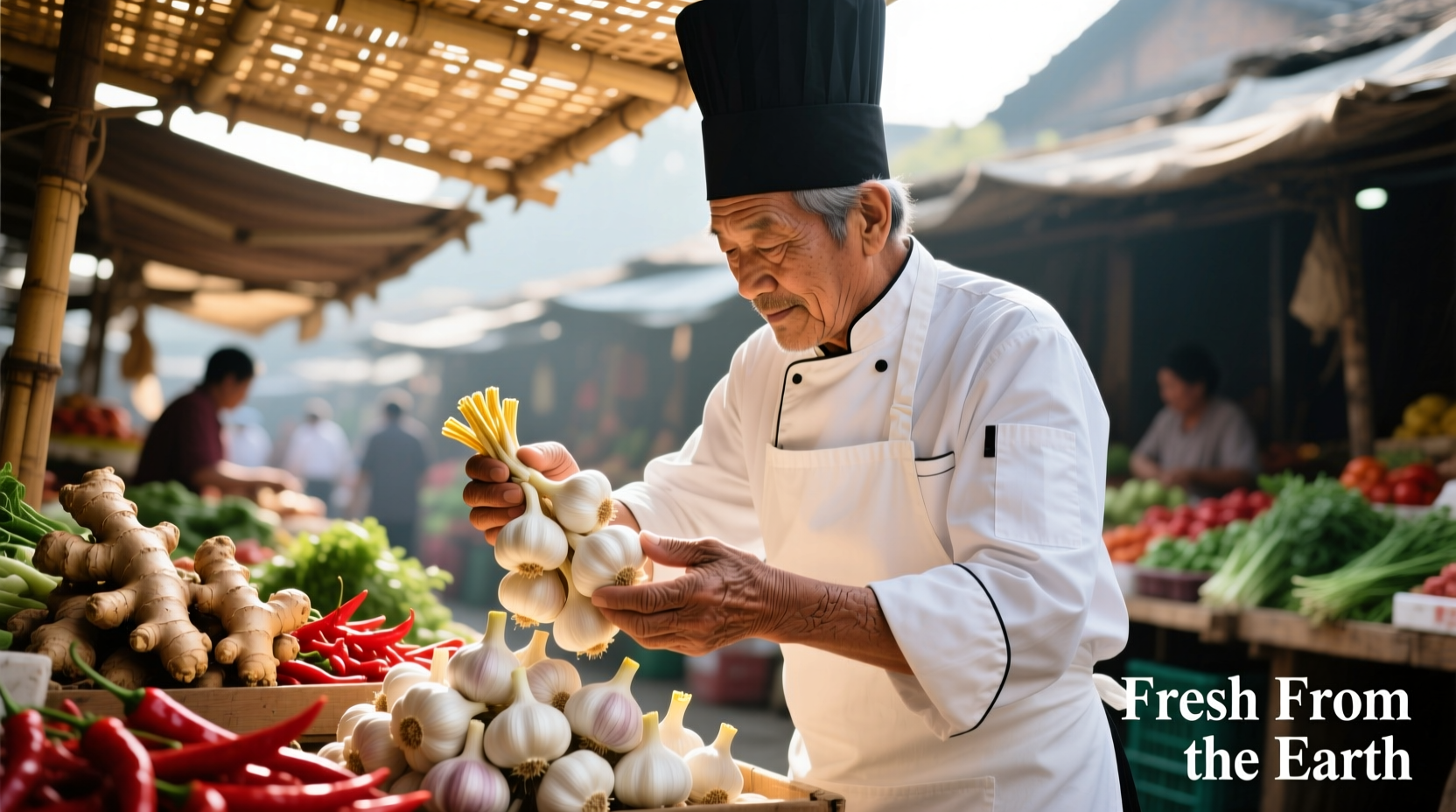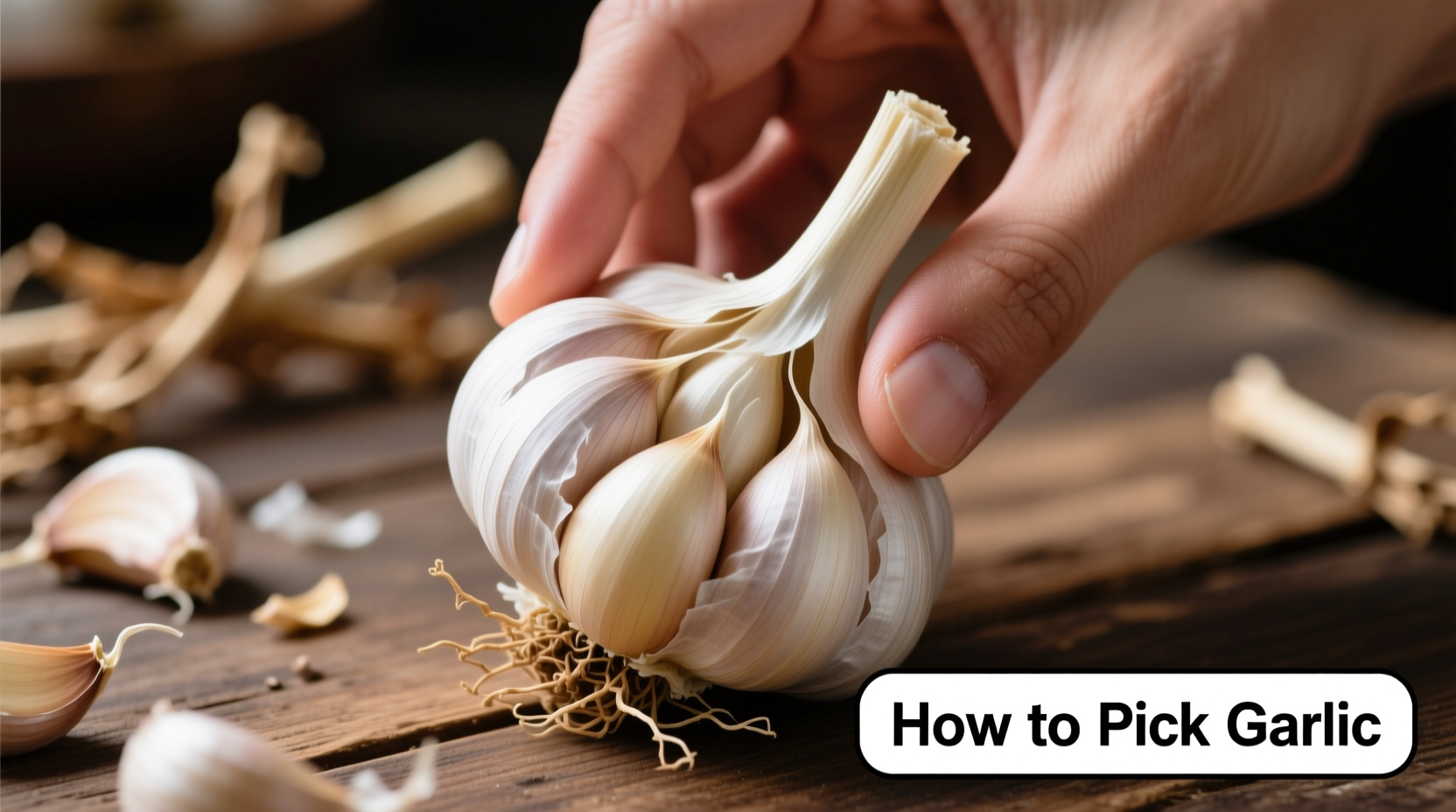When learning how to pick garlic, focus on three critical factors: firm bulbs with tight, unbroken wrappers, no signs of sprouting or soft spots, and a fresh, clean aroma. Avoid garlic with yellowing skin, visible mold, or a sour smell. The best garlic feels heavy for its size and shows no green shoots emerging from the cloves.
Selecting quality garlic transforms your cooking from ordinary to exceptional. As a chef who's evaluated thousands of garlic bulbs across markets worldwide, I've discovered that proper selection isn't just about appearance—it's understanding what each visual cue reveals about flavor potential and shelf life. Whether you're shopping at a farmers market or grocery store, these evidence-based techniques will ensure you consistently choose garlic that delivers maximum flavor and longevity.
Understanding Garlic Varieties Before You Pick
Before you start examining individual bulbs, recognize that not all garlic is created equal. The two main categories—softneck and hardneck—have different selection criteria:
| Garlic Type | Best Selection Period | Key Selection Features |
|---|---|---|
| Softneck (Artichoke, Silverskin) | Year-round (stored) | Multiple clove layers, flexible stalks, longer shelf life |
| Hardneck (Rocambole, Porcelain) | Summer through early fall | Fewer larger cloves, stiff central stalk, superior flavor |
According to agricultural research from the University of California Cooperative Extension, hardneck varieties typically offer more complex flavor profiles but have a shorter seasonal availability. Softneck varieties dominate supermarket shelves because they store better—up to 9 months under proper conditions compared to hardneck's 4-6 month window.

The Visual Inspection: What to Look For
Your eyes provide the first critical assessment when learning how do you pick garlic properly. Stand the bulb upright and examine it from all angles:
- Wrapper integrity—The papery outer layers should be intact and relatively clean. Some outer wrapper damage is normal, but avoid bulbs with extensive tearing or missing wrappers.
- Sprouting signs—Check for green shoots emerging from cloves. Even small sprouts indicate the garlic is past its prime and converting sugars to bitter compounds.
- Color consistency—Healthy garlic shows uniform off-white to pale purple hues. Yellowing, dark spots, or unusual discoloration suggest deterioration.
- Root development—Examine the basal plate (bottom). Small, dry roots are normal, but thick, moist roots indicate recent harvesting and potentially shorter shelf life.
The USDA Agricultural Marketing Service notes that premium grade garlic must have "at least 50 percent of the original covering of dry, papery skin" remaining. While grocery standards may be less strict, this guideline helps identify properly handled garlic.
The Touch Test: Assessing Quality Through Texture
After visual inspection, gently handle the bulb to assess critical quality indicators:
- Firmness assessment—Squeeze gently but firmly. Quality garlic should feel solid with no soft spots. Soft areas indicate internal decay.
- Weight evaluation—Compare bulbs of similar size. The heavier specimen typically contains more moisture and hasn't begun drying out.
- Clove separation—Avoid bulbs where individual cloves separate easily from the stem. This indicates advanced maturity and reduced shelf life.
- Stem condition—For hardneck varieties, the central stalk should be firm. A soft or mushy stalk suggests moisture penetration and potential spoilage.
Food safety research from the National Center for Home Food Preservation confirms that firmness directly correlates with garlic's safety and quality. Soft spots often indicate fungal growth that may produce harmful compounds not visible to the naked eye.
Using Your Nose: The Aroma Assessment
Your sense of smell provides crucial information about garlic's condition:
- Fresh garlic should have a clean, earthy aroma with subtle pungency
- Avoid bulbs emitting sour, musty, or fermented odors
- Strong ammonia-like smells indicate advanced decomposition
- Weak or absent aroma suggests aged garlic that's lost flavor compounds
According to flavor chemistry studies published in the Journal of Agricultural and Food Chemistry, the volatile compounds responsible for garlic's characteristic aroma begin degrading immediately after harvest. The ideal aroma balance indicates peak flavor potential without deterioration.
Seasonal Selection Strategies
Garlic quality varies significantly throughout the year. Understanding the seasonal timeline improves your selection success:
| Season | Garlic Type Available | Selection Priority |
|---|---|---|
| June-August | Freshly harvested hardneck | Moisture content, wrapper freshness |
| September-December | Curing hardneck, early softneck | Dryness, firmness, no sprouting |
| January-May | Stored softneck varieties | Firmness, weight, no mold |
When selecting garlic outside peak season, prioritize bulbs with multiple protective layers. The University of Florida's Institute of Food and Agricultural Sciences confirms that each additional wrapper layer extends shelf life by approximately 2-3 weeks under proper storage conditions.
Common Selection Mistakes to Avoid
Even experienced cooks make these critical errors when picking garlic:
- Mistake #1: Focusing only on size—Larger bulbs aren't necessarily better. Oversized garlic often has fewer, less flavorful cloves with higher water content.
- Mistake #2: Ignoring the basal plate—The bottom of the bulb reveals moisture issues and potential mold that aren't visible from the top.
- Mistake #3: Selecting pre-peeled cloves—These lose flavor compounds rapidly and often contain preservatives. Whole bulbs maintain quality for weeks when stored properly.
- Mistake #4: Not checking multiple bulbs—Garlic quality varies even within the same display. Always examine several specimens before selecting.
Special Selection Considerations
For specific culinary applications, adjust your selection criteria:
- For roasting—Choose larger bulbs with bigger cloves that roast evenly without burning
- For raw applications—Select younger garlic with milder flavor and less pungency
- For long-term storage—Prioritize hardneck varieties with multiple wrapper layers and avoid any bulbs showing moisture
- For maximum allicin production—Choose firm bulbs and allow chopped garlic to rest 10 minutes before cooking
Remember that garlic continues to develop flavor compounds after harvest. Research from the Journal of Food Science shows that garlic reaches peak flavor potential approximately 2-3 weeks post-harvest, then gradually declines. This explains why freshly harvested garlic sometimes lacks the depth of flavor found in properly cured bulbs.











 浙公网安备
33010002000092号
浙公网安备
33010002000092号 浙B2-20120091-4
浙B2-20120091-4